UPDATE
You now have to hike to Drangarnir with a guide, not only to protect the beautiful nature and wildlife in this area, but also for your own safety! Please check out this page for more information on booking your trip.
Also, check out this blog post with 8 Unforgettable places you CAN'T miss in the Faroe Islands!
So I'm sure you've seen the famous photo of Drangarnir?
You know the one with stormy seas and seagulls swooping in the front of the frame?
Well what those photos don’t tell you is that this hike to Drangarnir is one of the most intense and possibly dangerous hikes in the Faroe Islands, but also one of the most unforgettable experiences we had in this country, and possibly our lives.
Having spoken to a local the previous evening about the hike to Drangarnir, he advised us that the first part was the most confusing, the middle part the scariest, and the last part the most rewarding. So with that in mind, and altogether slightly underprepared, we set off with some sandwiches in our backpacks and camera in hand towards a place we’d only seen in photos.
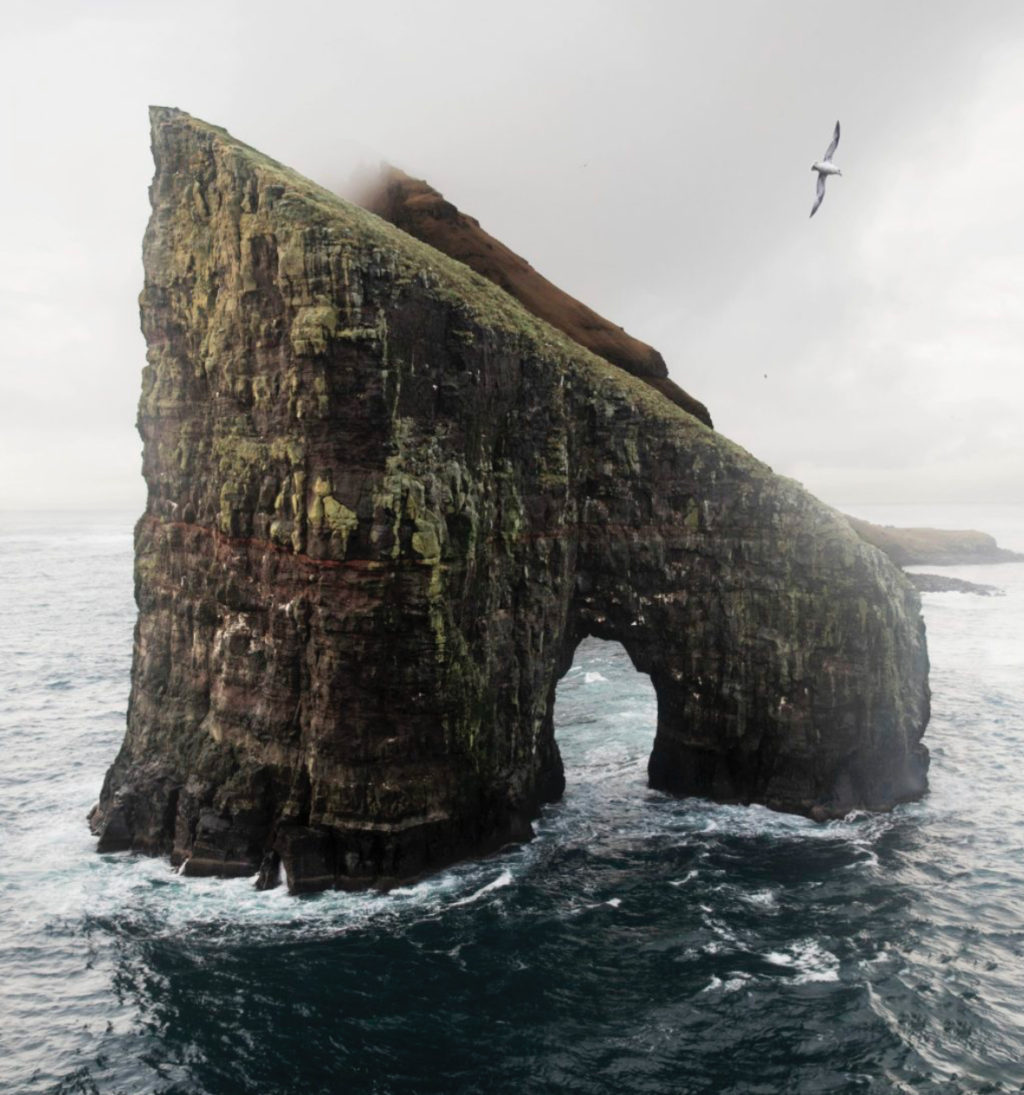
Keep Close To The Water
The hike starts off by walking through an industrial estate. We were told that it would feel like we are in totally the wrong place, walking in totally the wrong direction but to keep going, around the machinery and delivery lorries until we reach a small sheep pen that we would have to climb over.
Once through (or over) the sheep pen we were immediately on a small path with a steep drop on our right. The only reassuring thing was that the drop wasn't too far so chances of survival were still quite high if we were to fall.
The key is to stick as close as possible to the water as you feel is safe. At times it was steep, but if you start to walk further up the mountain to get away from the cliff edge, it can get dangerously steep later on and you'll have to turn back (we've heard this from so many other travellers since). So although it does feel like a safer option to move away from the rocky waters edge, stay close to it and you will reach Drangarnir.
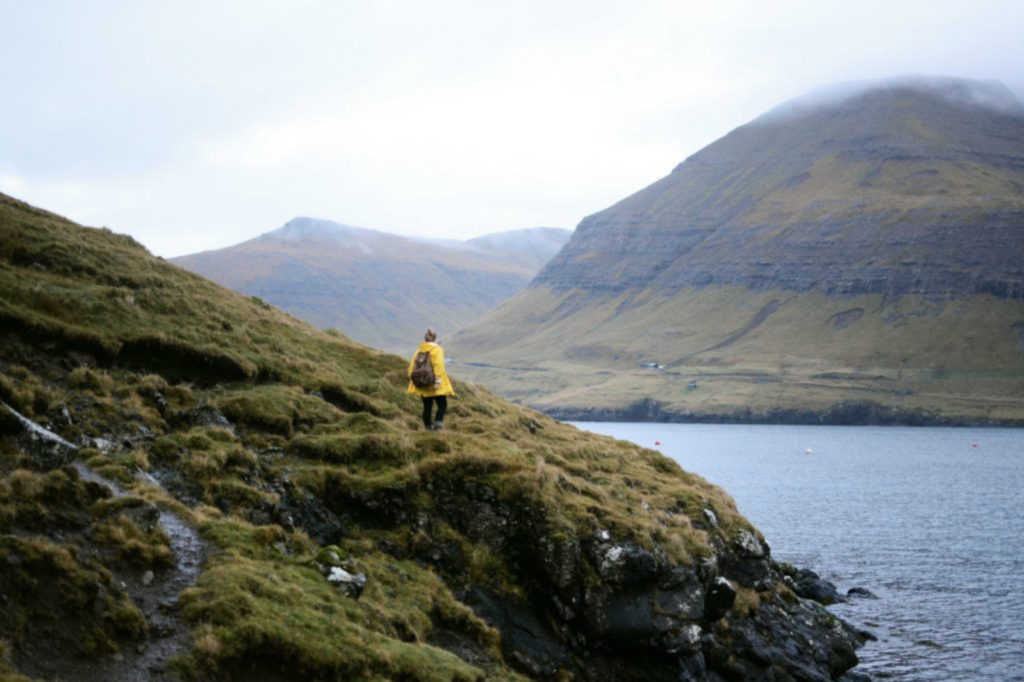
There Are No Signs
Tourism is fairly new in the Faroe Islands which means that many of the hikes, especially Drangarnir, are not particularly obvious. There are no signs telling you which way to go. We actually didn’t bump into a single person in our entire day, unless you count the sheep ofcourse.
Here is a map with a rough guide of the route we took. You can see how the inland terrain becomes a lot steeper.
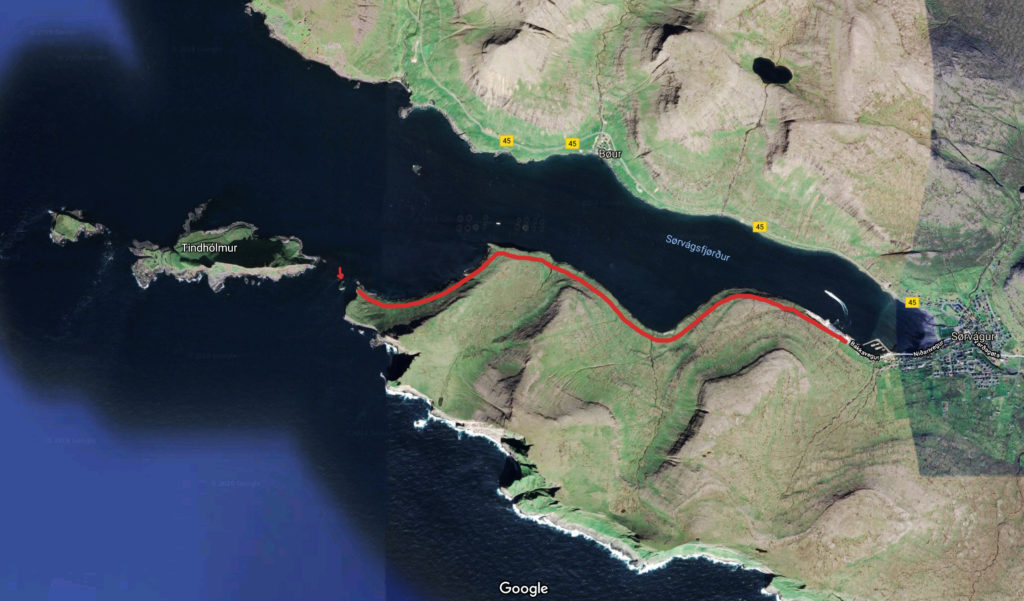
The Lighthouse means you're on track to Drangarnir!
We continued along this path for a while, about 30 minutes or so, aware that the drop to our right was getting steeper and higher with every step. A few times the path had fallen away into the water so we had no option but to hop over the small gaps left behind. The path, and coastline, does a gradual left turn towards a small cove that was once used to smuggle banned goods from Denmark to the Faroe Islands.
The path sort of disappeared at this point but we kept walking with the water on our right, having to clamber over a small fence and through a stream.
After crossing the stream, the path magically reappears and leads you towards two small waterfalls.
At this point we still hadn't seen a view of Drangarnir and we were eager to catch a glimpse. With any trace of a path having now disappeared, we made sure to keep the waters edge on our right as we scrambled our way forwards, leaving the small cove behind us.
Once we arrived at the top of the small hill, we could see a small lighthouse beacon just below us, which is used to help direct ships towards the village of Sørvágur.

The Final Push
We carried on in the same direction and suddenly there it was! Drangarnir in the distance! Our goal was in sight and now all that was left to do was to walk along the edge of an absurdly steep cliff without slipping down into the icy cold waters of the Atlantic Ocean. Simple stuff.
Just to add to the overall experience, it had been raining lightly since the beginning of the hike, which meant the grass was quite slippery. We had checked the weather before setting off but the weather in the Faroe Islands has to be one of the most unpredictable things we’ve ever experienced. A raincoat and good walking boots was the most important thing with us that day, except food ofcourse (we love food!)
We had been walking for 2 hours now and we could almost taste the celebratory chocolate bar! Drangarnir was so close we could almost touch it so we soldiered on towards the famous sea stacks. We had built up the courage to head towards what seemed like an impossibly steep, very slippery, unmarked route along the edge of the cliff.
The paths we took seemed to come and go, sometimes it would completely vanish before reappearing 4 metres below us meaning we would try to re join the path without loosing our footing and slipping down.
Certainly if you're scared of heights, or slipping down the side of the cliff into a very watery grave then this hike is probably not ideal. If you're looking for a thrilling and butt-clenching ride then this is absolutely the right hike for you.
After what seemed like an eternity but was actually around half an hour, the ground below our feet started to level out as we got nearer to our goal. The last 15 minutes of the hike were mostly through soggy grass that seemed to weigh our feet down with every step. But with a new found momentum, we pressed on and arrived at the famous cliff edge after a respectable 3 hours of walking.

It Will Be Worth It
All in all, the hike to this famous spot in front of Drangarnir was one of the most intense experiences we had in the Faroe Islands, but it was also the most memorable. There is no feeling that compares to standing face to face with the majestic Drangarnir, and Tindhólmur behind it.
You follow what at times feels like daredevil sheep tracks, with steep drops to one side and nothing to hold on to. Our buttholes were clenched so tight that if you were to put a piece of coal up there, in 20 minutes you’d have a diamond. Overall, the whole trip took us around 6 and a half hours including lunch and photos at Drangarnir.
Still, we made it back in one piece, and it was one of the most extraordinary days we've had in these magnificent islands.
BE CAREFUL
- The weather in the Faroe Islands is unpredictable! We travelled in October which is the Off-Season and there were times when we would see all types of weather in a day. Rain, Fog, Sleet, Cloud, Sun. It's impossible to be able to tell what the weather holds so only set off on the hike if the weather looks good and be prepared for any outcome!
- Hiking Gear: Proper hiking boots are essential, especially if it's been raining. The soggy grass can become a dangerous slide leading directly into the cold cold ocean.
- Don't Go Alone! Hiking can be dangerous, always go with at least one other person in case something happens and you need help.

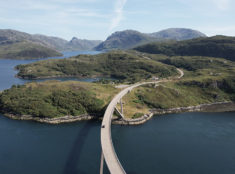

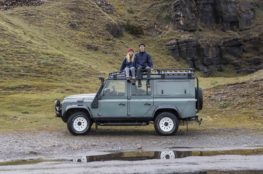
May 8, 2018
Great discription! I’m going there next August and still don’t know of a ‘perfect’ route. If you know by now, please let me know! Great shots! Congrats! And great joke about the diamond. I laughed soooo loud! Loved it! Cheers from Rio, Brazil!
May 11, 2018
Hi Pavlos! Yes we had the same problem when we went, no one seems to know because it’s still pretty untouched! But that is the incredible beauty of this place, you will have an AMAZING time I am sure of it! Stay safe and we’re so glad you enjoyed our post 🙂 From Frida and Leo!
February 22, 2019
Great to read this and thank you! Considering spending a week there and wondering if you advice about what we should do. Moderate to strenuous hiking is good. Are there ferries between all of the main islands? How were the accommodations while there – anything to watch out for?
February 28, 2019
Hi Jim!
That’s so exciting, we’re still dreaming of our trip to the Faroe Islands, it’s such an incredible place!
Our favourite hikes were definitely Drangarnir, Sørvágsvatn and Kallur Lighthouse > there’s a blog post here about all over favourite places 🙂
There are ferries to all the islands but they can be at pretty random times but we found the easiest thing to do is visit a tourist office when you arrive and they have timetables for all the islands! (i’ve looked for it online but can’t seem to find anything!)
We actually stayed in a Land rover with a roof top tent (which we were able to rent on AirBNB) so we mostly stayed in campsites, but a few nights when the weather was awful we found some last minute cool little places to stay in on AirBNB. And in terms of things to watch out for.. I’d say always be aware of the weather because that’s the most dangerous thing you’ll encounter in the Faroe Islands, and of course THE SHEEP. They are everywhere and always on the road so look out for them, they are fearless!
I hope you have a wonderful trip and if you have any other questions, we’re so happy to answer them 🙂
All the best,
Frida